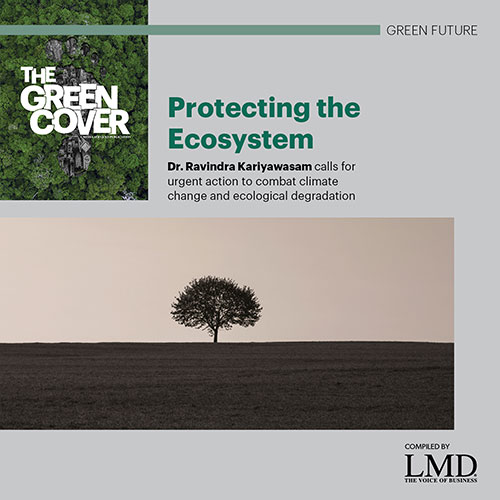PLASTIC POLLUTION
Tackling a Global Issue
Lourdes Abeyeratne discusses the importance of combatting waste management and plastic pollution

The MV X-Press Pearl incident earlier this year led to Sri Lanka’s coast being inundated with millions of plastic pellets, causing what the Marine Environment Protection Authority (MEPA) described as potentially “the worst beach pollution in our history.”
 According to the UNEP, half of all plastic produced is designed to be used once while about 300 million tonnes of plastic waste is generated globally every year – this is said to be nearly the equivalent of the weight of the entire human population.
According to the UNEP, half of all plastic produced is designed to be used once while about 300 million tonnes of plastic waste is generated globally every year – this is said to be nearly the equivalent of the weight of the entire human population.
Estimates indicate that more than 8.3 billion tonnes of plastic have been produced since the 1950s with about 60 percent of this thought to have wound up in landfills or the natural environment.
More than 99 percent of plastics are produced from chemicals derived from oil, natural gas and coal – i.e. nonrenewable resources. In fact, the global plastic manufacturing sector is on track to account for 20 percent of the world’s oil consumption by 2050 if present trends continue.
Based on estimates for 2010, Sri Lanka ranked fifth globally in terms of the mass of mismanaged plastic waste with 1.6 million tonnes being produced each year, a large volume of which ends up in the ocean.
 Microplastic pollution is cited among the main causes of declining fishing stocks along its coast – a 2018 survey commissioned by the National Aquatic Resources Agency (NARA) and supported by the Norwegian Institute of Marine Research (IMR) revealed that fish resources fell from 300,000 tonnes in 1980 to 53,000 tonnes in 2018.
Microplastic pollution is cited among the main causes of declining fishing stocks along its coast – a 2018 survey commissioned by the National Aquatic Resources Agency (NARA) and supported by the Norwegian Institute of Marine Research (IMR) revealed that fish resources fell from 300,000 tonnes in 1980 to 53,000 tonnes in 2018.
Moreover, studies conducted along the island’s south coast found that more than 60 percent of sand and 70 percent of surface water samples contained microplastics.
 The Sri Lanka Export Development Board (EDB) notes that “plastic processing has been a flourishing industry in Sri Lanka for over 45 years” while more than 400 companies are presently engaged in this field.
The Sri Lanka Export Development Board (EDB) notes that “plastic processing has been a flourishing industry in Sri Lanka for over 45 years” while more than 400 companies are presently engaged in this field.
Furthermore, it points out that Rs. 15 billion has been invested in this sector – almost half of which is from foreign direct investments (FDI). Additionally, two-thirds of this investment is solely for processing plastic products for export markets.
Over the years, Sri Lanka has undertaken a number of initiatives to tackle its waste management and plastic pollution challenges. Among its legal and policy interventions, the country has banned the manufacture of certain plastic products, and use of high density polyethylene (HDPE) bags and particular single-use plastics.
In line with the country’s aim to minimise ocean plastic pollution through land-based activities, the government is set to partner with UNEP’s CounterMEASURE project to track plastic waste in the nation’s rivers.
Upcycling and technology offer some opportunities for Sri Lanka to tackle plastic pollution but as the Lakshman Kadirgamar Institute points out, such initiatives must involve collaborating with companies engaged in the country’s plastic processing sector – which contributes to several sectors – to ensure a gradual and smooth transition to plastic alternatives while avoiding economic shocks.
While plastic has become essential to daily living, there is a need for innovative and collaborative waste management solutions – particularly as South Asia is considered to be the second largest contributor of solid waste. The World Bank notes that the region produces 334 million tons annually and is set to be the “fastest growing contributor to plastic pollution over the next two decades.”
Given this scenario, Sri Lanka must play its part in mitigating and addressing the global issue of plastic pollution.






